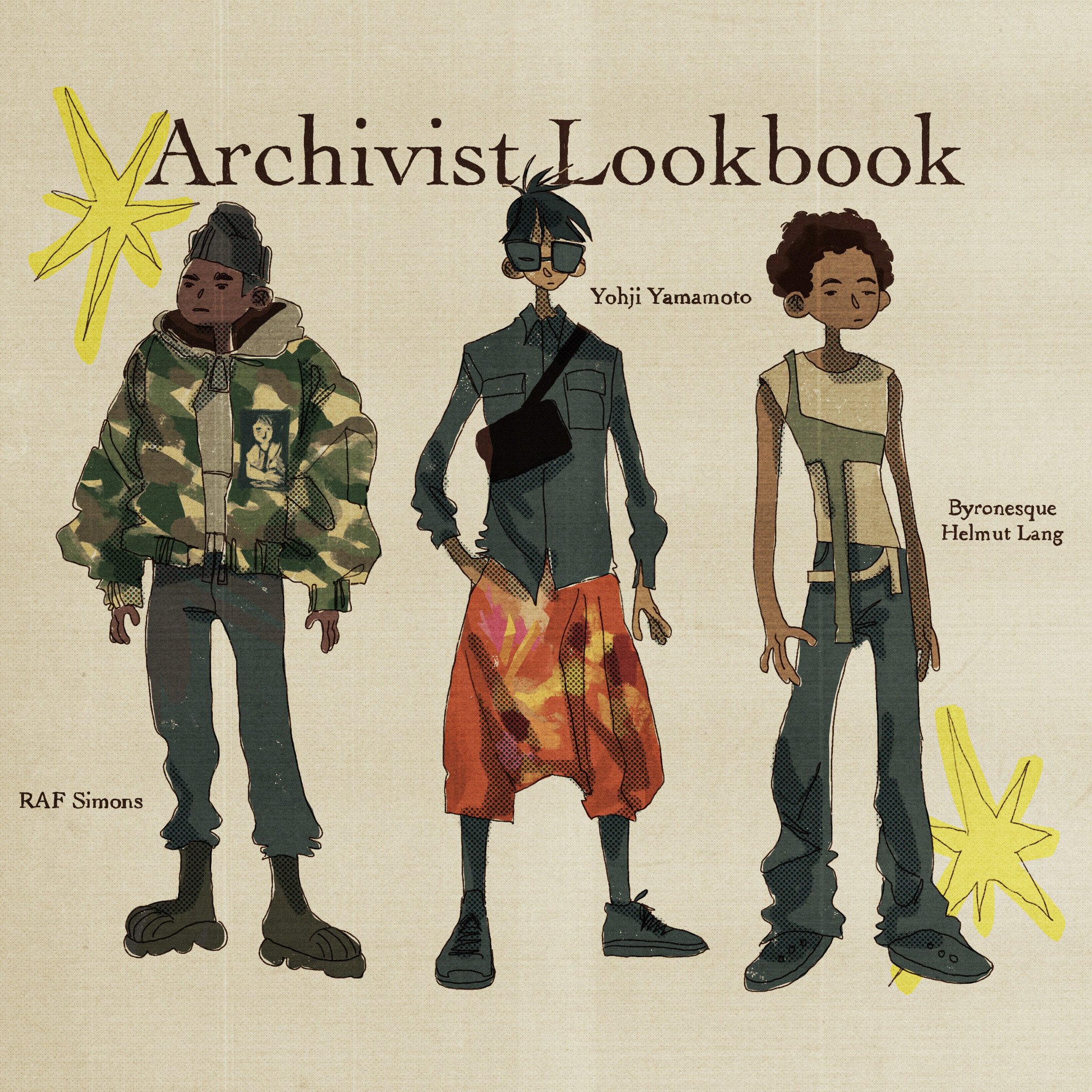ARCHIVE FASHION: The Crucial Pieces that Shaped Fashion Today
Written and graphics by Mikayla Buneta
I was ecstatic to rip open a shiny pack of Pokemon cards when I was a kid, to play with Monster High dolls, and to listen to music on my iDog MP3 player back in the 2010s. Now as a young adult in 2023, I’m reminiscing on the nostalgic items and pieces we had “back in the day”. I catch myself missing my Nike Hi-Tops, and I’m ever so grateful for my mom’s overseas acclaim for designer brands. Fashion as an art can be admired despite class or culture, and the 1990s through the 2000s has notably curated some of the most groundbreaking and original pieces; the beginning of modern craftsmanship and design. The best and most sought-after pieces coming from this era can be defined as “Archive Fashion”, and have recently been making a resurgence in popularity.
Archive fashion can be pinpointed as the origin of modern fashion movements, giving reason towards its extreme value. As thrifting becomes popular and personalized, taste becomes more apparent and individualistic. The hunt for exclusive and unique pieces becomes a tougher battle. This further contributes to the fast-paced culture of archive fashion; the low number of physical pieces in high demand leads to that gruesome price tag. It can also be attributed to celebrity sightings; artists like A$AP Rocky and Travis Scott have shown taste in the Helmut Lang collection, which fans may indulge in to look like their heroes. Just their influence can bring trends to light for the younger generation.
Don’t see the difference between archive clothes and your local thrift store? These pieces have moth holes with purpose. Bouncing back on the idea of archive fashion being “timely” pieces, a lot of designers choose to create their garments to be long-lasting and malleable in its form. Raf Simons’ 2002 “Virginia Creeper” collection was purposefully pilled, distressed, and treated with acid wash to naturally decompose over time. The name behind the collection brings attention from archivists as well. Further on Simons’ work, his 2003 “Consumed” collection was all about the message on modern consumerism (a little ironic), how logos and brand names contribute all too well to the young fashion enthusiasts. Something purposeful and tailored towards a message also allows consumers to resonate deeper with the articles they buy and the designers they follow. Other notable designers include Issey Miyake, Alexander McQueen, and Christian Dior.
Archive fashion does not have a specific intention of explaining its popularity. Maybe you just really want to own a $50,000 distressed cotton hoodie. It’s not a phase! Nevertheless, these designers have spent decades raising questions against conformity and designing new and thought provoking pieces. Like any art form, there is space to be admired, and archive fashion rightfully is taking its place. Could there be another era in which the new generation has a moment as an archive? As an ode to passion and creation, clothes are more than just their appearance, carrying within their seams documented moments in time.

